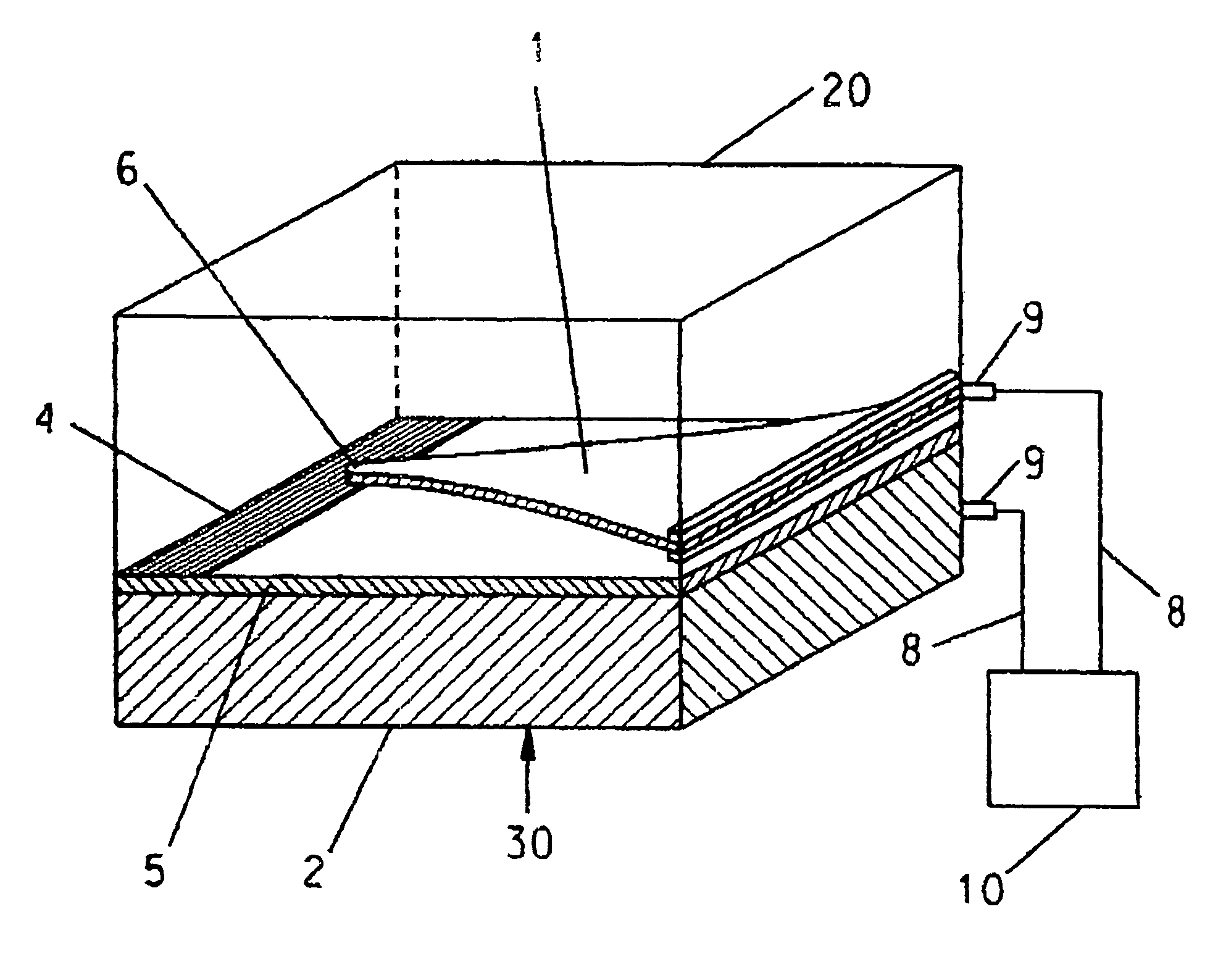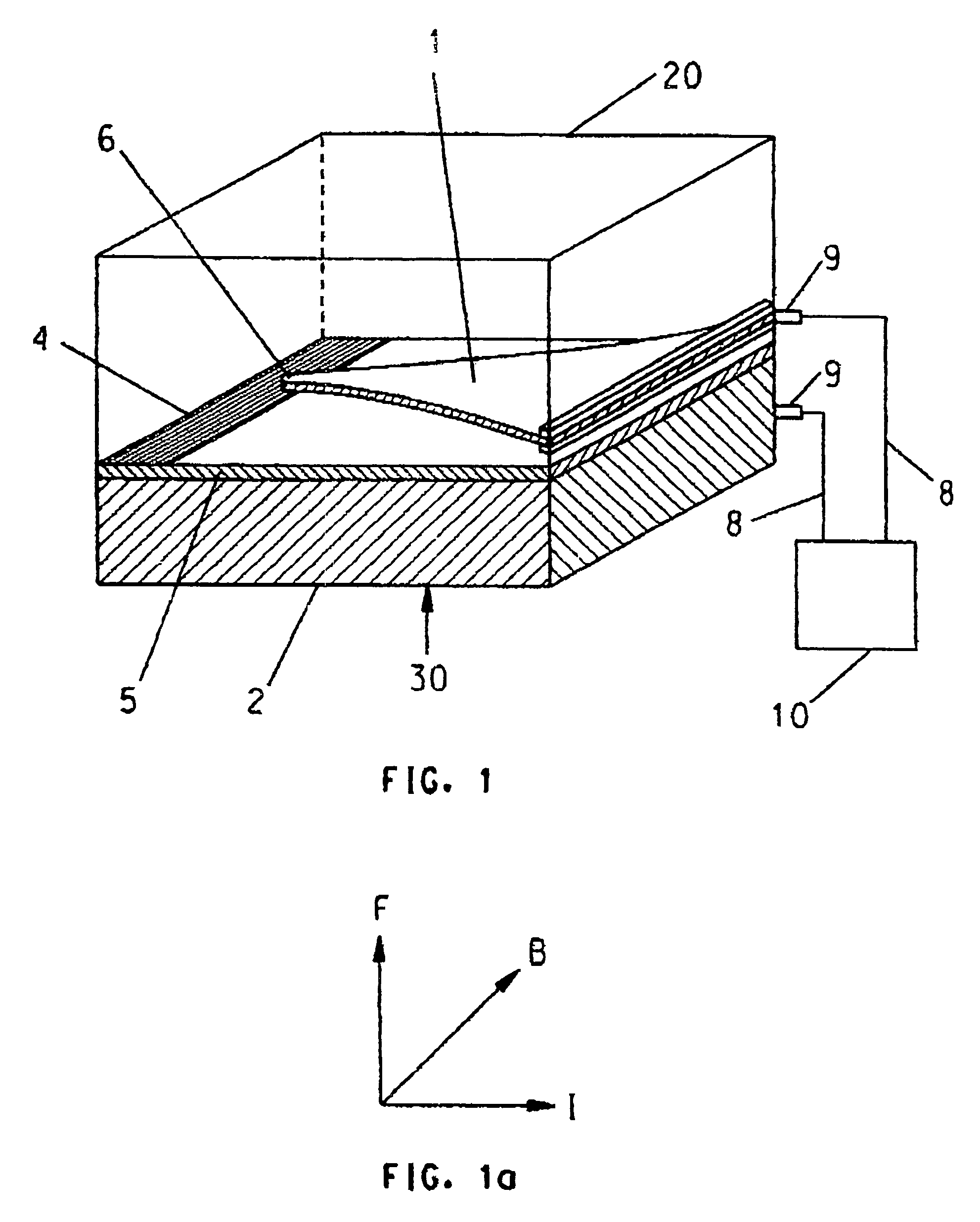Closely spaced electrodes with a uniform gap
a gap and electrode technology, applied in the field of diodes, thermionic, tunneling, can solve the problems of low conversion efficiency, limited operation, and limited cooling measurement in the working apparatus, and achieve the effects of low cost and mass production, simple and inexpensive thermo-tunneling, and low cos
- Summary
- Abstract
- Description
- Claims
- Application Information
AI Technical Summary
Benefits of technology
Problems solved by technology
Method used
Image
Examples
example 1
[0075]For a thermo-tunneling converter, consider the following dimensions in FIG. 1, 2 or 3:
[0076]The total overlapping tunneling area Y of the facing electrodes is 1 square centimeter or 10−4 square meters. The length L of the flexible electrode 1 is 2 centimeters, and the maximum width W is 1 centimeter. The length L and width W are defined similarly for FIG. 3, but electrode 1 is wrapped around into a spiral shape as compared to a linear shape for FIG. 1. The facing surface of electrode 1 is surface-patterned or has a surface roughness such that the total tunneling area X (the sum of all x's) is one-tenth the total surface area Y or 10−5 square meters. The permanent magnet material used in electrode 2 has a field strength B of 1.2 Tesla. The voltage V between the electrodes is 0.15 volts. The permittivity constant ∈ of either vacuum or rarified inert gas between electrodes 1 and 2 is equal to 8.8×10−12 farads per meter. The resistivity r of the flexible electrode 1 is assumed to ...
example 2
[0082]Another example of the versatility of this invention is in the choice of materials. The preferred embodiment, as described in Example 1, includes a metal foil as one of the electrodes. Another embodiment could use a single-crystal silicon as the flexible electrode. Although silicon is not normally regarded as a flexible material, it is routinely fabricated in the industry with a roughness of 0.5 nanometers and a flatness of 1 micrometer across a square centimeter surface. Although silicon is much stiffer than a metal foil as measured by the Young's Modulus, its flatness indicates that very little bending is required to approach ideal flatness. The forces generated by the invention will be shown to be able to bend a silicon wafer by the one micron needed flatten it completely. Overall, using silicon as the base material for the flexible or both electrodes has several advantages: (1) silicon wafers are readily available at low cost, (2) silicon wafers have desirable roughness an...
PUM
 Login to View More
Login to View More Abstract
Description
Claims
Application Information
 Login to View More
Login to View More - R&D
- Intellectual Property
- Life Sciences
- Materials
- Tech Scout
- Unparalleled Data Quality
- Higher Quality Content
- 60% Fewer Hallucinations
Browse by: Latest US Patents, China's latest patents, Technical Efficacy Thesaurus, Application Domain, Technology Topic, Popular Technical Reports.
© 2025 PatSnap. All rights reserved.Legal|Privacy policy|Modern Slavery Act Transparency Statement|Sitemap|About US| Contact US: help@patsnap.com



